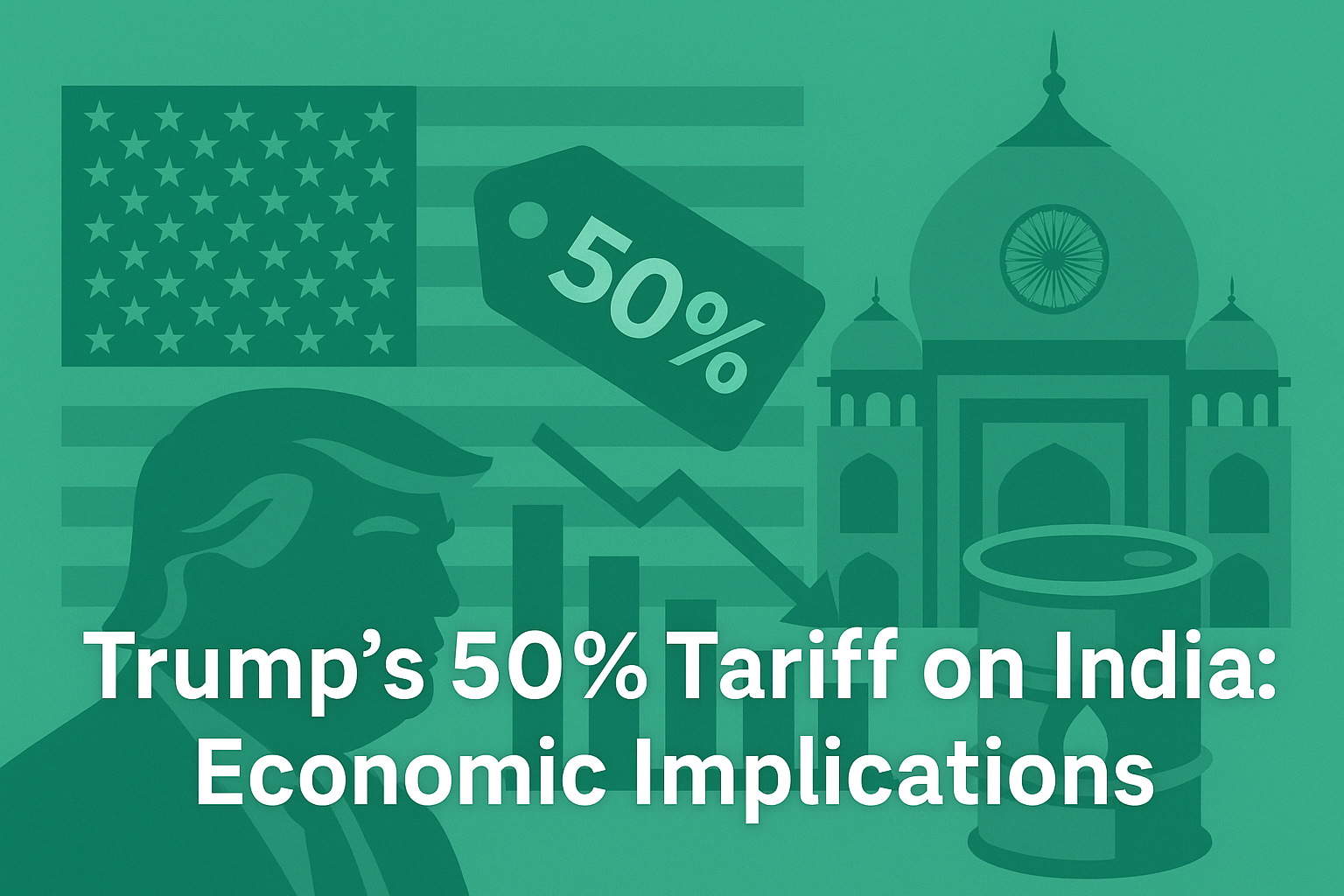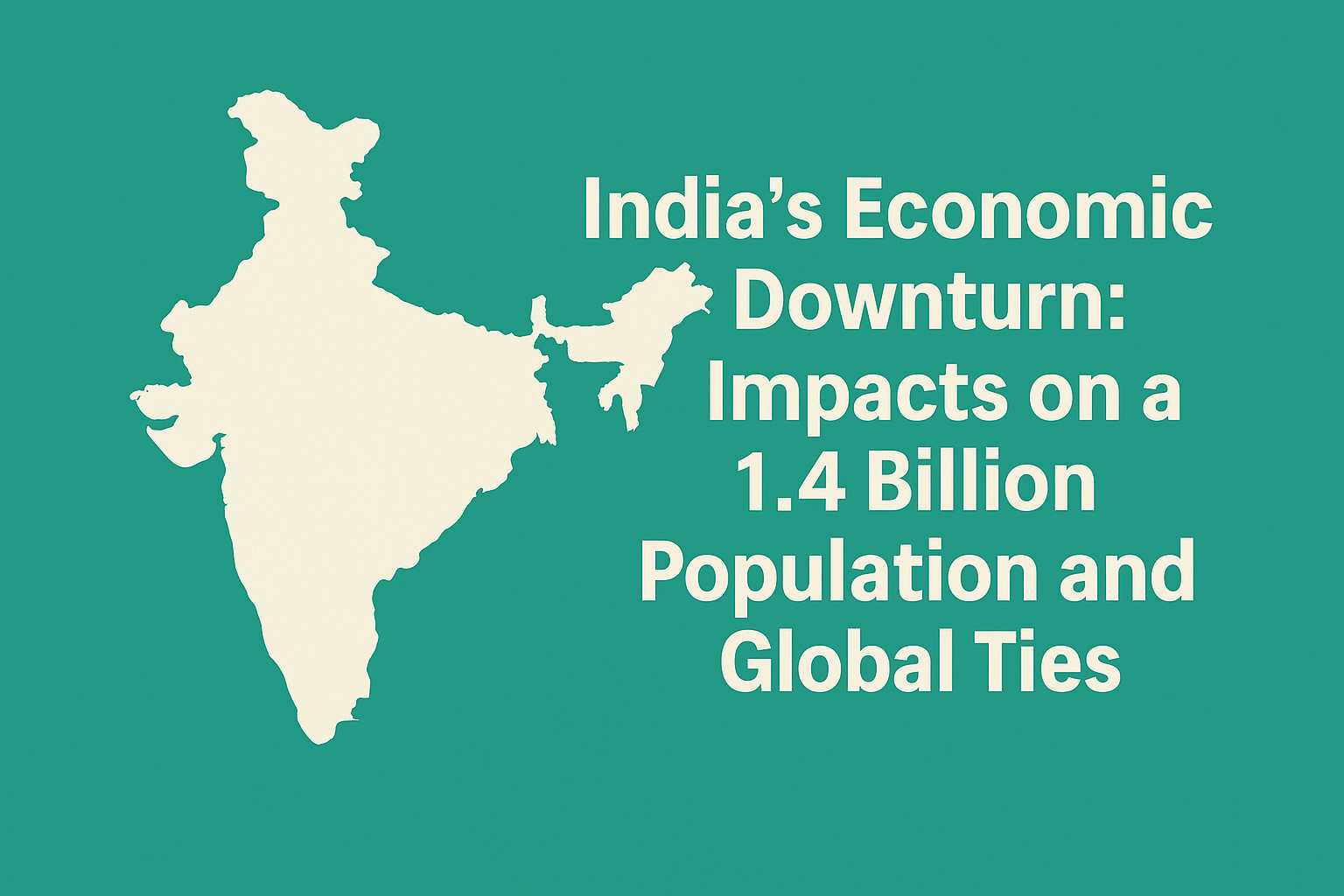Introduction
In August 2025, President Donald Trump announced the imposition of tariffs of up to 50% on Indian exports to the United States. This policy represents a significant escalation in U.S.-India trade tensions and has direct implications for India’s export-led industries, its macroeconomic stability, and its ongoing energy partnership with Russia. This report examines the economic effects, sectoral vulnerabilities, and geopolitical consequences of this move.
1. Background of the Tariff Policy
The tariffs, effective from August 27, 2025, apply to a wide range of goods including textiles, apparel, jewelry, footwear, furniture, and chemicals. Approximately 55–66% of India’s $87 billion exports to the United States will be affected. The U.S. administration has justified the decision by arguing that India’s discounted purchases of Russian crude indirectly support Moscow’s war financing.
2. Economic Implications for India
Export Performance and Growth
The sectors most exposed to the new tariffs are labor-intensive, particularly textiles and jewelry. These industries account for millions of jobs within India’s MSME (Micro, Small, and Medium Enterprises) sector. Analysts estimate that the new trade barriers could reduce GDP growth by 0.3–0.7 percentage points in FY2025/26, bringing overall growth closer to 6%.
Employment and Social Impact
The tariff shock is expected to trigger employment losses in export clusters such as Surat’s diamond polishing industry and textile hubs in Gujarat and Tamil Nadu. Job contraction in these regions could create localized economic stress and political challenges for New Delhi.
Prices and Household Consumption
While tariffs do not directly affect India’s domestic consumer prices, secondary effects may emerge. If Russian crude purchases are constrained, fuel costs could rise, adding to inflationary pressures. Conversely, weaker external demand could moderate wage growth in some sectors, easing inflation slightly.
3. Sectoral Winners and Losers
- Severely affected: Textiles, apparel, jewelry, footwear, furniture, sports goods, and chemicals.
- Relatively resilient: Pharmaceuticals, IT services, and certain electronics exports, which remain outside the tariff list.
4. India’s Energy Relations with Russia
India is one of the largest buyers of Russian crude, importing approximately 1.5–1.7 million barrels per day. The discounted oil has saved India an estimated $170 billion since 2022. With U.S. tariffs now offsetting part of these gains, New Delhi faces a dilemma: continue purchases and risk further U.S. penalties, or diversify supplies at potentially higher costs. For now, India has signaled only modest reductions in Russian oil imports, prioritizing energy security.
5. Geopolitical Consequences
The tariffs complicate U.S.-India relations at a time when both nations are aligned within the Quad framework for security cooperation. Moscow, however, benefits strategically from the widening rift between Washington and New Delhi. India is expected to maintain a multi-aligned foreign policy, balancing its strategic ties with the United States and its energy partnership with Russia.
6. Outlook
- Base Case: Growth slows modestly to around 6%, with export losses partially offset by diversification into EU and Gulf markets.
- Upside Scenario: Partial rollback of tariffs or expanded exemptions allow India to minimize economic damage.
- Downside Scenario: Additional U.S. restrictions on technology exports or further escalation in oil prices reduce growth to the mid-5% range.
Conclusion
Trump’s tariff escalation against India is likely to deliver a short-term shock to India’s export sector, particularly textiles and jewelry, and generate localized employment stress. However, resilient sectors such as pharmaceuticals and IT services provide buffers to the broader economy. Strategically, India faces increasing pressure to navigate between U.S. trade demands and Russia’s energy supplies, highlighting the complexities of its multi-aligned diplomacy in a shifting global order.


